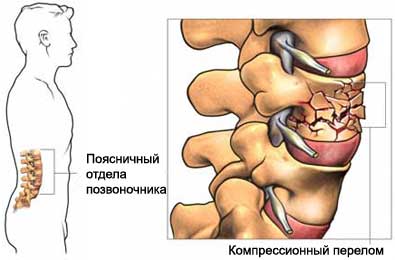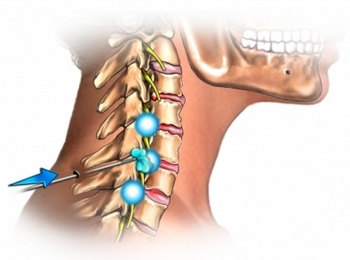Intrathecal pump – Implantation of intrathecal pump
Description implanted intrathecal pump
Implantation of intrathecal pump is conducted to reduce the pain. A small pump is sewn into the body and provides pain medicine to the area around the spinal cord of the brain.
Reasons for the implantation of intrathecal pump
This method of anesthesia is often used, If non-invasive methods to reduce pain proved to be ineffective or have negative side effects. Intratekalnyj pump can be used to reduce long-term pain, arising from the:
- Unsuccessful operations in the back or neck;
- Compression fracture;
- Phantom limb pain;
- Cancer;
- Simpaticheskaya reflektornaya dystrophy – disease of the nervous system;
- Kauzalgija – burning pain due to peripheral nerve injury;
- Araxnoidit – inflammation of the spinal nerves;
- Chronic pancreatitis – Pancreatic inflammation.

Many patients obtained a significant reduction of pain and can improve the functionality of everyday life after implantation of the intrathecal pump.
Possible complications of intrathecal pump installation
Complications are rare, but no procedure does not guarantee the absence of risk. If you plan to implant an intrathecal pump, you need to know about possible complications, which may include:
- Bleeding;
- Infection;
- Brain and spinal pain;
- Catheter tube is blocked and the pump stops working;
- Side effects of painkillers;
- Related to pump implantation complications;
- Nerve damage.
Factors, that may increase the risk of complications:
- Psychological problems;
- Active infection;
- Allergy or intolerance to pain medicine or materials used;
- Blood clotting, concomitant anticoagulant therapy.
How is the implantation of an intrathecal pump?
Preparation for the procedure
Before the bone doctor will prescribe the following:
- Medical checkup;
- Blood tests;
- Electrocardiogram – test, which detects heart activity by measurement of electrical current through the heart muscle;
- Chest X-ray – test, which uses X-rays to take pictures of structures inside the body.
Before the surgery, you need to be tested, To make sure, the pump will actually help reduce the pain. Analgesic will be entered into the area of the spine. In some tests, in the region of the spine may be placed catheter. The catheter is then connected to an external pump. The test period is determined by the proper placement of the catheter and the necessary dose of medicine.
In the run-up to the procedure:
- Do not eat anything the night before surgery, unless otherwise noted physician;
- We need to organize a trip home from the hospital and home assistance during recovery.
Consult your doctor about the drugs taken. A week before surgery you may be asked to stop taking some medicines:
- Aspirin or other anti-inflammatory drugs;
- Blood thinners, such as clopidogrel (Plaviks) or warfarin.
Anesthesia
It can be used topically, spinal or general anesthesia.
Procedure Implantation of intrathecal pump
To place the catheter, in the back is a small incision is made. Tubes (the so-called spinal catheter) It will be placed next to the spinal cord. Then she fastened joints.
The doctor will use the X-ray machine, to help hold the catheter under the skin of the back, around the torso, and then the abdomen. The doctor will create a pocket under the skin of the abdomen, which will be placed intrathecal pump.
When the device is in the right place, outside anesthesia is disabled and the pump will be tested. The cuts on the back and abdomen will be closed with staples or stitches. To the place of bandage.

After implantation, intrathecal pump
After the procedure, you will be directed to the chamber to restore. Will control blood pressure, heart rate and breathing, and also the possible side effects, such as:
- Sedation;
- Slow breathing;
- Constipation;
- Itch;
- Nausea and vomiting;
- Headache;
- Excitation.
How long Implantation takes intrathecal pump?
About 3-4 hours.
Implantation of intrathecal pump – will it this painfully?
You will anesthetized during this procedures, the pain will not be felt. Nome pain occurs after operation, used to reduce the discomfort painkillers.
Care after implantation of the intrathecal pump
Returning home, you should do the following:
- Avoid bending, twisting, stretching, lift heavier objects 3 kg, raising arms above the head. You can not sleep on my stomach, long climb stairs, or sit for a long time 6-8 weeks after surgery;
- Avoid driving for 2-4 weeks after surgery;
- You can not do housework and resume sexual activity, unless permitted by a doctor;
- You can gradually return to normal activities;
- Walk short distances at first, through 2 week gradually increase the distance 1,5-2,5 kilometers per day;
- Ask the doctor, when it is safe to shower, bathe, or to expose the surgical site to water;
- Be sure to follow your doctor's instructions.
The battery must be changed every pump 5-7 years. You will need to see your doctor regularly, to fill the pump analgesic.
Contact your doctor after implanted intrathecal pump
After discharge from the hospital need to see a doctor, If the following symptoms:
- Redness, edema, pain, or discharge around the incision;
- Uncontrolled pain or pain, which gradually intensifies;
- Sudden pain in the back;
- The opioid withdrawal syndrome: hurried breathing, Sweating, cold, excitation, increased heart rate, temperature rise, tremor, muscle cramps, muscle aches, loss of appetite, abdominal pain, diarrhea;
- Signs of infection, including fever and chills;
- Urinary bladder or intestine;
- Headache, that lasts more than 48 hours;
- The noise of the pump;
- Sudden weakness and spasm of the legs;
- Nausea and / or vomiting;
- Cough, shortness of breath or chest pain.
